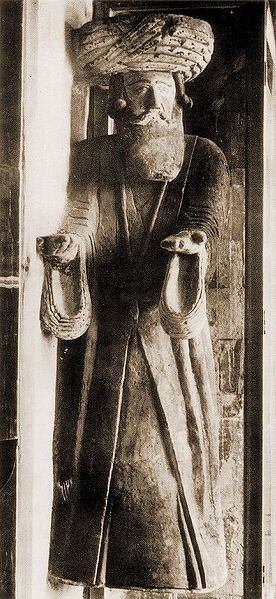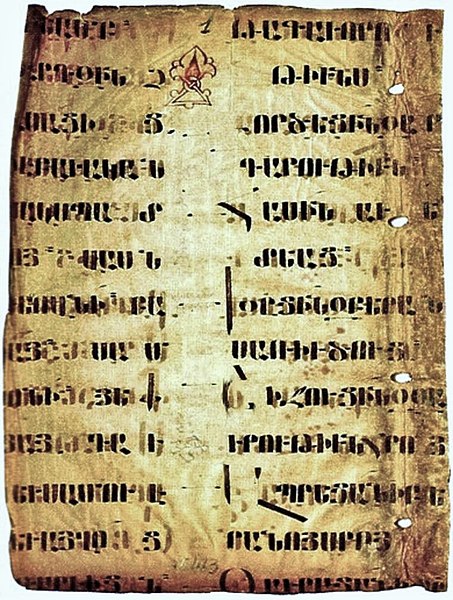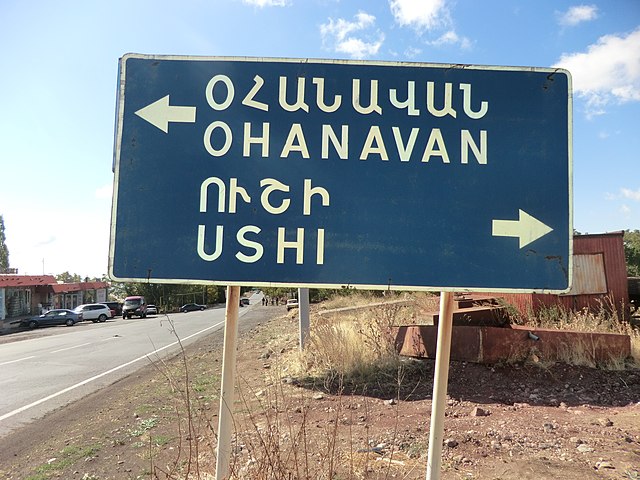Bagratid Armenia was an independent Armenian state established by Ashot I Bagratuni of the Bagratuni dynasty in the early 880s following nearly two centuries of foreign domination of Greater Armenia under Arab Umayyad and Abbasid rule. With each of the two contemporary powers in the region—the Abbasids and Byzantines—too preoccupied to concentrate their forces on subjugating the region, and with the dissipation of several of the Armenian nakharar noble families, Ashot succeeded in asserting himself as the leading figure of a movement to dislodge the Arabs from Armenia.
Relief carvings of Smbat and Gurgen Bagratuni at Sanahin
A statue of King Gagik I that originally had him holding a model of the Church of St. Gregory.
Royal enthronement scene from the frontispiece of a gospel commissioned by Gagik-Abas, ruler of Kars circa 1050.
The Cathedral of Ani, completed in 1001 by Trdat the Architect
Armenian is an Indo-European language and the sole member of an independent branch of that language family. It is the native language of the Armenian people and the official language of Armenia. Historically spoken in the Armenian highlands, today Armenian is widely spoken throughout the Armenian diaspora. Armenian is written in its own writing system, the Armenian alphabet, introduced in 405 AD by the canonized saint Mesrop Mashtots. The estimated number of Armenian speakers worldwide is between five and seven million.
Armenian manuscript, 5th–6th centuries.
The Four Gospels, 1495, Portrait of St Mark Wellcome with Armenian inscriptions
First printed Armenian language Bible, 1666
Armenian language road sign.








